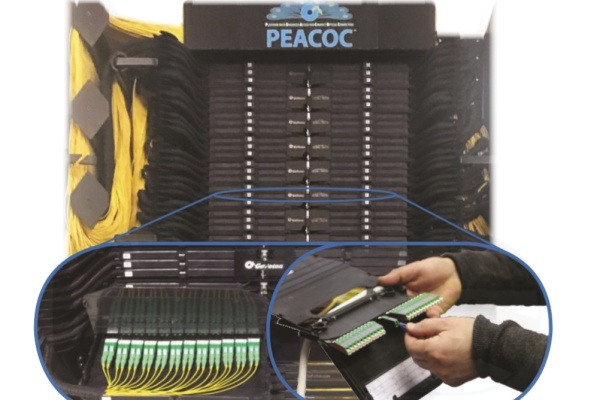
Operators are being urged to utilise high-density fibre management to avoid being left behind in the ever evolving world of network infrastructure.
As the average cost of a data centre outage has increased year-on year since 2010, operators are quickly realising that if they do not stay ahead of network evolution, the consequences will be costly and disastrous.
Michael Zammit, VP and GM of Go!Foton Corporation, specialists in innovative high-density, fibre management solutions, is urging operators to combat these issues by implementing future-proof connectivity solutions now, to save on unnecessary costs, and reduce service affecting network disruption down the road.
Speaking at ISE Expo 2018, Mr Zammit will discuss how the transformation in telecom and data centre fibre infrastructure is architected and how it has created a dramatic densification of optical fibre, which requires carriers to rethink the way they implement fibre connectivity management.
Service providers must choose wisely to ensure that their next generation fibre management systems are agile and flexible to support new, high fibre count cables and the changing connection paradigm needed to enable network virtualisation in a converged network environment.
“As the journey towards converged networks, 5G, IoT, and NFV unfolds, operators will soon realise that their current fibre management and connectivity systems are wholly inadequate and lack efficiency and organisation to support their continued growth.”
“Quick fixes can be attractive but are often complex, time consuming, and very limiting. To get ahead of the game, operators must choose wisely to deploy connectivity solutions that enable a high degree of agility and versatility that is needed now. This may seem like a daunting step, but by being more efficient from the outset, it will allow a scalable pay-as-you-grow network to evolve – especially as connection densification and high fibre count cable challenges come into play,” explained Zammit.
Building a future-proof network infrastructure that is compatible with existing infrastructure allows carriers to smartly migrate from SC to LC connectors while reaping the benefits of multi-fibre MPO connections and integrated optical components.
Typically, businesses will just add to their existing, antiquated fibre infrastructure, only to find out the network is unable to cope when more bandwidth and additional services are added into the mix.
Instead, planning for the future and shopping around for new flexible and scalable solutions can address operators’ challenges. Failure to implement connectivity solutions which will truly scale to support the diverse connection demands carriers are facing today, will result in crippling congestion and chaos down the road that will ultimately undermine the high network reliability both residential and business customers have come to expect.
Go!Foton has come up with a solution In the form of its PEACOC high-density fibre management platform. PEACOC (Platform with Enhanced Access for Compact Optical Connectors) which will be showcased at ISE Expo this year, is a high-density fibre management platform widely deployed both in the central office and data centre world, as well as in OSP cabinets and remote terminals.
The PEACOC solution provides its users with piece of mind and allows technicians to manage and operate their networks tool-free and with greater ease, accuracy, and reliability. The highly versatile PEACOC high-density platform also enables service providers, and their respective data centres, to operate more efficiently and ultimately cost-effectively to better manage the increasing strain on operating expenditures (OpEx).
“Currently, the challenges we are seeing with existing infrastructure is overall awkward and chaotic fibre routing and management, poor utilisation of already scarce rack resources, and a lack of adoption of new small form factor interconnect cables with higher count, bend optimised fibres.”
“In the move towards fibre dense architectures resulting from 5G, IoT, and cloud computing, these debilitating practices simply cannot continue without adverse consequences to network performance and reliability. Operators must turn towards innovative technology that allows service providers to manage these demanding environments, in a more intelligent and thoughtful way which maintains the highest network quality and reliability.”
“The impact of taking such bold steps will be noticed almost immediately – both in terms of customer satisfaction as well as improved OpEx performance. If you do not start planning, taking appropriate measures, and considering your fibre connectivity strategy now, it will only hold you back and leave you open to devastating issues that will hinder your ability to move forward with the rest of the industry,” concluded Zammit.
The PEACOC high-density fibre management platform, alongside a complete range of the company’s optical connectivity solutions will be on display at booth 221 at ISE Expo 2018 held at the Colorado Convention Centre, Denver, USA, August 14-16.


